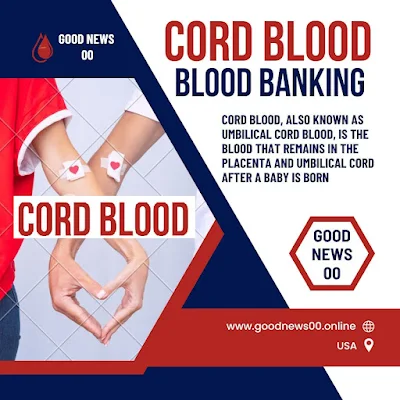Blood Banking: Cord Blood
Cord blood, also known as umbilical cord blood, is the blood that remains in the placenta and umbilical cord after a baby is born. This blood is rich in stem cells, which are the building blocks of the body's immune and blood system. Stem cells have the potential to develop into various types of cells, including white blood cells, red blood cells, and platelets.
Treat a variety of diseases
Cord blood stem cells have been used to treat a variety of diseases, including certain types of cancers, blood disorders, and genetic diseases. They have also been used in clinical trials to treat conditions such as cerebral palsy, autism, and type 1 diabetes.
Simple and painless process
The collection of cord blood is a simple and painless process that can be done immediately after the baby is born. The cord blood is collected using a needle and syringe, and the process takes only a few minutes. The collected cord blood is then sent to a cord blood bank for processing and storage.
Private or Public
Cord blood banking can be done in two ways: private or public. Private cord blood banking involves storing the cord blood for personal use by the baby or a family member. Public cord blood banking involves donating the cord blood for use by anyone who needs it.
Promising Technology
Overall, cord blood banking is a promising technology that has the potential to revolutionize the treatment of many diseases and conditions. As research continues to advance, it is likely that the use of cord blood stem cells will become even more widespread and effective. For those who are considering cord blood banking, it is important to weigh the potential benefits and limitations carefully and to make an informed decision based on individual circumstances and preferences.
Discuss the option of cord blood banking
It is also important to choose a reputable cord blood bank that follows strict guidelines and regulations to ensure the safety and efficacy of the stored stem cells. Additionally, it is recommended to discuss the option of cord blood banking with healthcare providers and to educate oneself on the process and potential uses of cord blood stem cells. Ultimately, cord blood banking can provide a valuable resource for families and individuals seeking potential treatments for a variety of medical conditions, and it is an option worth considering for those who are interested in preserving this precious resource.
Private cord blood banking can be expensive
Private cord blood banking can be expensive, with initial costs ranging from $1,000 to $2,000, and annual storage fees ranging from $100 to $200. Public cord blood banking is free, but there are eligibility criteria that must be met, and the donated cord blood may not be available for personal use.
Benefits of cord blood banking
There are several benefits of cord blood banking. The most significant benefit is that it provides a source of stem cells that can be used to treat diseases and conditions that may arise in the future. Cord blood stem cells are a perfect match for the baby, and there is a high probability that they will be a match for siblings and other family members.
Eliminates the need for bone
Cord blood banking also eliminates the need for bone marrow transplants, which can be painful and require a long recovery period. Cord blood stem cells are easier to collect and store than bone marrow, and there is a lower risk of rejection.
Non-invasive and painless
Another benefit of cord blood banking is that it is non-invasive and painless. The collection of cord blood does not harm the baby or the mother, and the process takes only a few minutes.
Collected is limited
Despite the benefits of cord blood banking, there are also some limitations. The amount of cord blood that can be collected is limited, and it may not be enough for larger individuals or multiple treatments. There is also a small risk of contamination during the collection process, which can affect the quality of the cord blood.
Emerging field
In addition, the use of cord blood stem cells is still an emerging field, and there is limited research on its long-term effectiveness. While cord blood stem cells have been used to treat certain diseases, there is no guarantee that they will be effective in all cases.
Individual circumstances and preferences
Cord blood banking is a personal decision that should be based on individual circumstances and preferences. It is important to consider the cost, eligibility criteria, and potential benefits and limitations before making a decision.
Variety of diseases and conditions
In conclusion, cord blood banking is a valuable resource that provides a source of stem cells that can be used to treat a variety of diseases and conditions. The collection process is simple and painless, and there are both private and public options available. While there are some limitations and potential risks associated with cord blood banking, it is ultimately a personal decision that should be based on individual circumstances and preferences.


Comments
Post a Comment